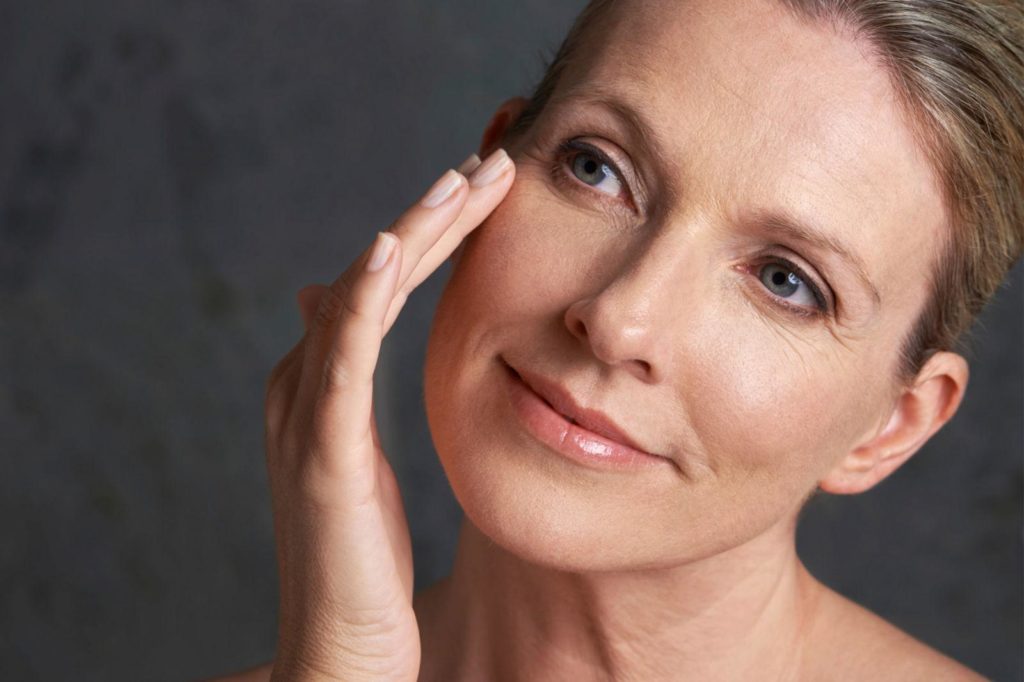
I am a big proponent of using a ‘less is more’ approach when it comes to tackling the signs of ageing. Small, targeted treatments and procedures can maintain a fresher, more youthful look for longer, particularly into a person’s 30s or 40s. We continue to age, of course, so a regime of targeted smaller procedures can work with what’s naturally youthful in the complexion until such times that something more significant is needed.
When a patient comes to me for a consultation, I always ask how much younger they want to look. Sometimes people just want to look a bit fresher and less tired, so we can treat, for example, the eye area, which can have a truly significant effect on the face overall.
I have noticed an increased interest in the threadlift procedure too, which can be very effective to tighten sagging skin and restore a defined contour to the chin and jowls. It is not permanent, and can be carried out numerous times, making it a good non-surgical option for many people.
However, I would say that from the 50s through to the 70s, treatments need to step up a level and a facelift or neck lift might be required to maintain a youthful-looking appearance.
A facelift, also known as a rhytidectomy, is without doubt a significant procedure to undergo, but techniques and procedures have come a long way in recent years. It was once merely a skin tightening surgery – we have all seen the unnatural, pulled-back effects of old surgeries – but today there is a much bigger focus on natural-looking results. The techniques used are more anatomically detailed and have been designed to create an authentic shape and contour. This all means more natural looking results, that still enable a person to look like themselves.

The consultation stage is key to any facelift procedure. It requires a detailed pre-op analysis of the face and features. The patient also needs to be in robust health and an analysis of their suitability for the treatment from a clinical perspective will be performed. The patient will be made fully aware of all the potential risks involved in the procedure and what will happen during the surgery.
A standard open facelift procedure involves the dissection and re-positioning, or draping of the facial tissue. As you might imagine, it requires a huge level of specialised surgical knowledge. This is important from a practical level - to protect nerves in the face, etc – and an aesthetic level too, to ensure the best results. The surgeon may also incorporate fat grafting and streamline the muscles, such as the platysma muscle in the neck, to improve the overall end results.
It’s also key that the surgery is ‘finished’ well, to avoid any tell tale signs of the procedure. Recovery time may be less than you might imagine, with most patients able to return to life as usual after about two or three weeks.
(Some patients may be suitable for a limited incision facelift. As the name suggests, this requires shorter incisions. They can be hidden within the skin creases at the hair line and near the ears.)
A facelift can also be performed alongside other procedures, such as a neck lift or a brow lift for a completely tailored result, but as with any cosmetic surgery procedure, it is important to discuss potential outcomes with your surgeon and understand what can be done to allow you to stay looking like yourself, only better.
If you are considering a cosmetic surgery procedure, we can advise on the best options for you. Contact us to arrange a consultation.
Find out all you need to know about cosmetic procedures and the factors you need to consider in our free guide: Considerations Before Deciding on Cosmetic Surgery and Post-Treatment Care:
Download Mr. Chan's Guide to Cosmetic Surgery Considerations

I am a big proponent of using a ‘less is more’ approach when it comes to tackling the signs of ageing. Small, targeted treatments and procedures can maintain a fresher, more youthful look for longer, particularly into a person’s 30s or 40s. We continue to age, of course, so a regime of targeted smaller procedures can work with what’s naturally youthful in the complexion until such times that something more significant is needed.
When a patient comes to me for a consultation, I always ask how much younger they want to look. Sometimes people just want to look a bit fresher and less tired, so we can treat, for example, the eye area, which can have a truly significant effect on the face overall.
I have noticed an increased interest in the threadlift procedure too, which can be very effective to tighten sagging skin and restore a defined contour to the chin and jowls. It is not permanent, and can be carried out numerous times, making it a good non-surgical option for many people.
However, I would say that from the 50s through to the 70s, treatments need to step up a level and a facelift or neck lift might be required to maintain a youthful-looking appearance.
A facelift, also known as a rhytidectomy, is without doubt a significant procedure to undergo, but techniques and procedures have come a long way in recent years. It was once merely a skin tightening surgery – we have all seen the unnatural, pulled-back effects of old surgeries – but today there is a much bigger focus on natural-looking results. The techniques used are more anatomically detailed and have been designed to create an authentic shape and contour. This all means more natural looking results, that still enable a person to look like themselves.

The consultation stage is key to any facelift procedure. It requires a detailed pre-op analysis of the face and features. The patient also needs to be in robust health and an analysis of their suitability for the treatment from a clinical perspective will be performed. The patient will be made fully aware of all the potential risks involved in the procedure and what will happen during the surgery.
A standard open facelift procedure involves the dissection and re-positioning, or draping of the facial tissue. As you might imagine, it requires a huge level of specialised surgical knowledge. This is important from a practical level - to protect nerves in the face, etc – and an aesthetic level too, to ensure the best results. The surgeon may also incorporate fat grafting and streamline the muscles, such as the platysma muscle in the neck, to improve the overall end results.
It’s also key that the surgery is ‘finished’ well, to avoid any tell tale signs of the procedure. Recovery time may be less than you might imagine, with most patients able to return to life as usual after about two or three weeks.
(Some patients may be suitable for a limited incision facelift. As the name suggests, this requires shorter incisions. They can be hidden within the skin creases at the hair line and near the ears.)
A facelift can also be performed alongside other procedures, such as a neck lift or a brow lift for a completely tailored result, but as with any cosmetic surgery procedure, it is important to discuss potential outcomes with your surgeon and understand what can be done to allow you to stay looking like yourself, only better.
If you are considering a cosmetic surgery procedure, we can advise on the best options for you. Contact us to arrange a consultation.
Find out all you need to know about cosmetic procedures and the factors you need to consider in our free guide: Considerations Before Deciding on Cosmetic Surgery and Post-Treatment Care:
Download Mr. Chan's Guide to Cosmetic Surgery Considerations